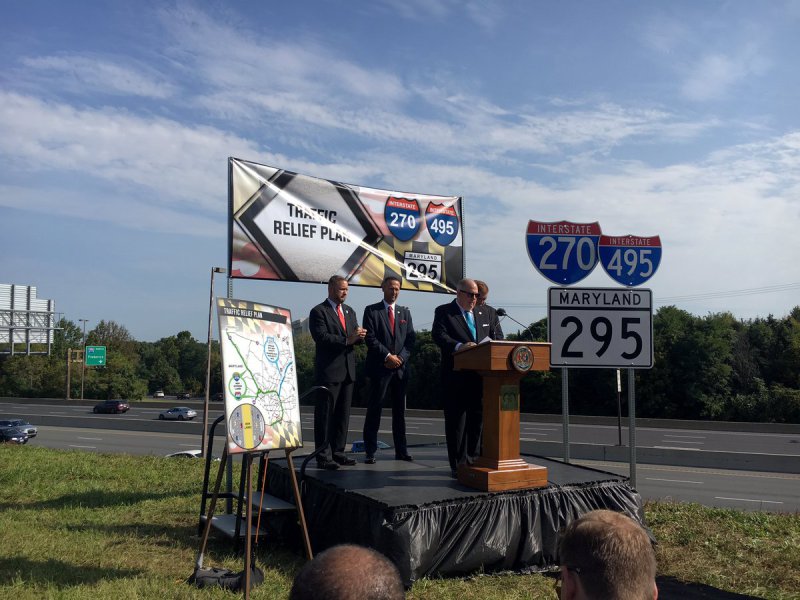Maryland Governor Larry Hogan likes to make a big show of being a fiscal conservative.
A Republican elected in a blue state, Hogan said Maryland just couldn't afford the Baltimore Red Line, a 14-mile light rail route that would have connected low-income, predominantly black neighborhoods to downtown jobs. When he unilaterally decided to kill the $2.9 billion project in 2015, Hogan called it a "wasteful boondoggle." The decision prompted a civil rights complaint by the national NAACP on the basis that it was racially discriminatory.
Well -- surprise, surprise -- it turns out when a multi-billion transportation project that doesn't benefit black city residents catches his eye, Hogan is fine with opening up the spigots.
Yesterday, Hogan announced a $9 billion plan to widen three highways used by the state's suburban car commuters. He called the widening of Interstate 270, the Capital Beltway, and Maryland Route 295/Baltimore-Washington Parkway "massive and unprecedented" and, even more outrageously, "efficient & cost-effective."
Hogan's claims rest on the fact that the new lanes will be tolled and privately financed. But counting on tolls to cover the cost of expensive new roads is often a bad bet, and if things go belly up, the public will be on the hook.
And there's nothing efficient about expanding highway capacity, generating more traffic, and increasing the appetite for land-devouring sprawl.
To top it off, Hogan is arguing that wider highways are going to lure Amazon's second headquarters to Baltimore, even though the company explicitly stated it wants to locate near high-capacity transit.
The fact is that Hogan wants to lavish resources on his people -- suburban car commuters, not Baltimore residents. Hogan is playing a familiar game of anti-urban identity politics, just like Scott Walker in Wisconsin, or John Kasich in Ohio, or Chris Christie in New Jersey.
More recommended reading today: The Bicycle Blog of Wisconsin reports that Scott Walker rejected requests to veto budget language that will essentially halt any recreational trail building in the state. And the Urban Edge considers how much of Houston's 667 square miles could be rightly called "urban."






